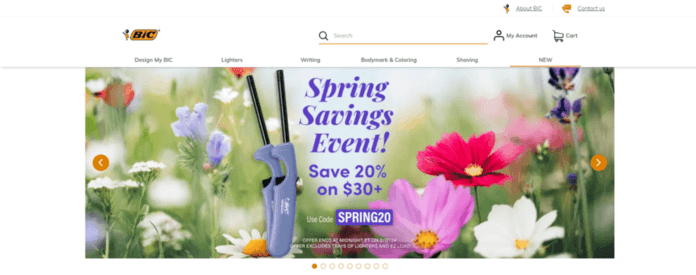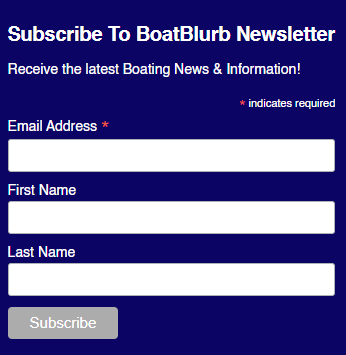Why isn’t my website driving leads?
The most common reasons why a website doesn’t drive leads are reach, relevancy, and usability. If you’re not reaching enough people in your target market and failing to deliver a relevant message and user-first experience, you’ll struggle to drive leads.
The most common reasons why a website doesn’t drive leads
Learn more about why a website doesn’t drive leads:
Reach
You can deliver the best customer experience, but if people don’t know about your business, they won’t contact you. That’s why reach is critical, and there are plenty of digital channels for reaching qualified users, including:
- Search
- Paid
- Social
Troubleshoot this lead generation issue with tactics like:
- Advertising with Google Ads to reach your market
- Building awareness with social media networks like Facebook
- Growing search visibility with search engine optimization
- Claiming local listings, like Google Business Profile (if you operate locally)
- Requesting existing customers to post reviews online
Relevancy
Lead generation depends on a relevant, compelling message. From headlines in paid ads to title tags in SEO content, you need the right message to persuade users to visit your site and act on your call-to-action (CTA).
Some ways to improve relevancy include:
- Understanding the search intent behind targeted keywords
- Researching which keywords competitors target in pay-per-click (PPC) and SEO
- Testing messaging for CTAs
- Creating micro-conversion offers, like a downloadable guide
If you can, speak with customers to understand why they chose your business. Look for trends in the words or phrases they use to describe your products, services, or team. Then, re-use that language in your marketing.
Usability
You can have a compelling message and still struggle to drive leads from your website if you have poor usability. For example, if your site doesn’t display correctly on mobile devices or your “Get a Quote” button doesn’t respond, you will lose leads.
Here are some ways to fix this lead generation issue:
- Test your site on multiple devices and browsers, from mobile to Firefox
- Monitor user experiences with Microsoft Clarity (which is free)
- Reduce the number of form fields (if possible)
Asking friends or family to visit your site can also help you surface usability issues.
How to drive leads from your website
Learn how to resolve the above issues and drive leads from your website now:
1. Optimize your site for SEO
One of the first and foremost steps to driving more website leads is to make sure people find your site in the first place. That’s why it’s absolutely essential to consider search engine optimization (SEO). SEO is where you optimize your website to rank high in Google search results. That allows people to discover your site.
There are lots of ways to optimize your site for SEO, some of which we’ll mention further down this list. One of the most important steps is to incorporate relevant keywords on all your pages. Figure out what terms your target audience is searching for in Google, and then include those terms on your site.
Of course, that doesn’t mean you should just stick them anywhere. You should put them on pages that actually answer the search intent for those terms — that is, your site should actually provide the info that people are looking for when they search for those terms.
Other SEO tactics include:
- Using HTTPS
- Earning reputable backlinks
- Including images and videos on your site
- And more!
2. Create compelling content
If you want people to visit your website — and to become leads once they’re there — there needs to be something to draw them in and engage their interest. That’s where content creation comes into play.
Content creation connects to your SEO. SEO is about getting your content ranking in search results where people can find it. But to do that, you kind of need to have content in the first place.
That content should answer common questions that people might have about your business or your industry. Some pages might talk about your specific products or services, but others may answer broader industry questions.
You should create different types of content for different stages of the buyer funnel to ensure you’re reaching everyone. You can also create content in different formats, from blog posts to videos.
3. Use lead magnets
It’s probably not surprising that one of the most straightforward ways to attract leads is with lead magnets. It’s right there in the name!
If you’re not familiar with lead magnets, they’re useful marketing materials that your business offers in exchange for users’ contact info. Some common types of lead magnets include:
- Ebooks
- Webinars
- Free trials
- Whitepapers
- Templates
So, let’s say you created an ebook with lots of helpful industry knowledge. You could offer that ebook for free on your website, but require users to submit their email address to access it.
If someone is interested enough to give you their contact info, they qualify as a lead. And with their email address in hand, you can now easily contact them with further marketing campaigns.
4. Include calls to action (CTAs)
Every business website should feature calls to action (CTAs). A CTA is something that tells users what you want them to do next.
For example, a blog post on your site might end with a CTA telling users to subscribe to your email newsletter. Or, a CTA on your homepage might encourage users to get a free quote.

Whatever your CTAs encourage users to do, they should point to a clear next step, and they should make it easy for users to take that step. Often, CTAs take the form of buttons that users can click to be directed to another page. An email subscription CTA might take users to a page where they can sign up for your emails, for example.
Without CTAs, users won’t really know what you want from them, so they won’t do it. You can’t expect people to ask for a free quote if you don’t encourage them to do so. It’s a huge step toward fixing the problem of your website not driving leads.
5. Improve your page speeds
One surefire way to lose out on leads is to have a website that provides a bad user experience. If users are having a bad time on your website, they definitely won’t stick around very long. Step one to providing a good user experience is to optimize your page load speeds.
If your pages load too slowly, users will soon get impatient and click away. Ideally, your pages should take no longer than three seconds to load — and the faster, the better. If you’re not sure how fast your pages are loading, you can always use Google’s PageSpeed Insights tool to get a free assessment.
To improve your page speeds, you can do things like:
- Minify code
- Cache web pages
- Compress images
- Limit redirects
6. Make your site mobile-friendly
While we’re on the subject of your website’s user experience, we should also talk about mobile-friendliness. A lot of people will probably visit your site on mobile devices, so you want to make sure your site will work well on those devices.
The easiest way to do that is to use responsive design, which is a type of web design that restructures the pages on your site to fit the screen where they appear. So, a page may look slightly different on a desktop computer than it would on a mobile phone.
Here’s one example of a desktop versus mobile design:


This isn’t just important for making users happy — it’s also crucial for your SEO. Google uses mobile-first indexing, which means the mobile version of your site is the one that determines how high it ranks in search results. If your site isn’t optimized for mobile, it’ll have no shot at ranking, so people won’t find it to begin with.
7. Optimize your contact forms
Last but not least, a good tactic to address your website not driving leads is to optimize your contact forms. These forms are how a lot of people become leads in the first place — it’s how they get their contact info to you and request quotes.
So, if users aren’t willing to fill out the forms, that’s a problem. If your forms are too long, too complicated, or straight-up broken, you aren’t going to get very many submissions.
“Optimizing contact forms isn’t just about capturing information — it’s about fostering seamless communication and forging meaningful connections with potential clients. By streamlining and refining this crucial touchpoint, businesses not only enhance user experience but also lay the foundation for cultivating valuable relationships that drive growth and success.”

For that reason, be sure you take the time to clean up all your forms. Avoid making them overly long or complex. Keep them short and simple, and test them to make sure that they function like they’re supposed to.

By making your forms functional and attractive, you’ll ensure that you get a lot more submissions.
Start driving leads with your website
Now that you know how to fix the issue of your website not driving leads, you can get to work. But you don’t have to do it alone. It’s a good idea to partner with a professional agency that has the knowledge, time, and resources to boost your website lead generation.
If you’re looking for an agency, look no further. We can help you optimize your site and drive more website leads. With more than 25 years of experience under our belt, you can rest assured that we know what we’re doing.
Contact us today to get started!


Meet
The top digital marketing company behind SEO.com.
Ready to get results? Connect with us, today!

Meet
The top digital marketing company behind SEO.com.
Ready to get results? Connect with us, today!



